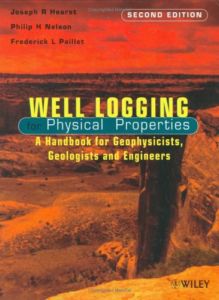A unique description of the latest logging technology and how to apply it not only in standard situations but in other conditions, such as air-filled boreholes and partially-saturated formations, and for other applications such as the estimation of lithology type, shale fraction and the movement of fluids in a borehole. Standard well logging technology was developed primarily to quantify the content of petroleum in fluid-saturated sedimentary formations, however, there are many other uses for the technology. By taking a fundamental approach to tool physics, and covering more topics in greater depth and at a higher technical level, this book enables the reader to understand the technology, to ask the right questions, and then to use the answers.
It explores the physical principles behind logging methods, including modern methods such as nuclear magnetic resonance, full-wave acoustic methods, and logging-while-drilling. No other book explains all of these new techniques. However, because log analysts must deal with logs run long ago, descriptions of the older technology are also retained.
This comprehensive resource will help the log user review the results from the logging service companies, which run the logs and present the results. Throughout the book, numerical values for the physical properties of fluids and minerals help the readers convert log values to actual formation properties. The explanations of technology, practical examples, and numerical data not only make this book an invaluable reference but also permit readers to improve and correct measurements made in the field.
Standard well logging technology was developed primarily to quantify the content of petroleum in fluid-saturated sedimentary formations. However, there are many other uses for the technology. This book covers more topics, in depth, than any other book in the field. It is the only book to cover nuclear magnetic resonance (NMR) logging and borehole gravimetry in any depth. Its high level, mathematically and technically, makes it invaluable. It is the first book to cover modern borehole imaging, measurement of fluid flow, in-situ mineralogical logging, logging while drilling, full-wave acoustic logging and electromagnetic wave resistivity, all of which have gained in importance since the first edition and none of which are explored in detail in any other book.
The book helps the log user critically review the results from the logging service companies which run the logs and present the results. It will enable the user to understand the technology, ask the right questions and utilise the answers to improve the results obtained from logging contractors. The book gives practical examples of situations in which the authors' knowledge of the technology permitted them to correct measurements made in the field. |
